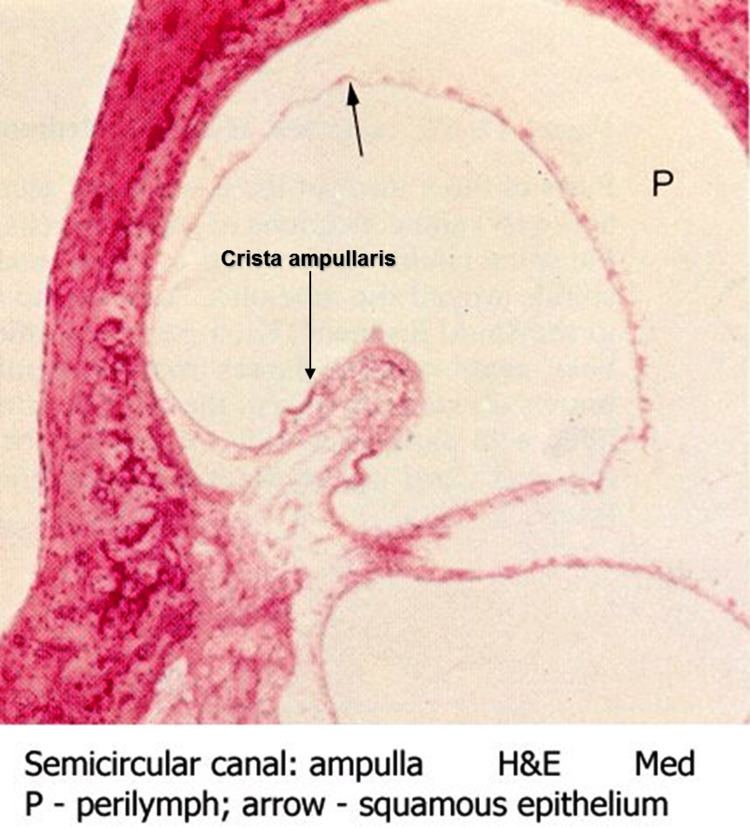 | ||
The crista ampullaris is the sensory organ of rotation. They are found in the ampullae of each of the semicircular canals of the inner ear, meaning that there are 3 pairs in total. The function of the crista ampullaris is to sense angular acceleration and deceleration.
Background
The inner ear comprises three specialized regions of the membranous labyrinth: the vestibular sacs and the semicircular ducts, which are the vestibular organs, as well as the cochlear duct, which is involved in the special sense hearing.
The semicircular canals are filled with endolymph, and also contain an inner membranous sleeve that form semicircular ducts. The semicircular ducts are filled with endolymph, and contain the crista ampullaris. The receptor cells located in the semicircular ducts are innervated by the eighth cranial nerve, aka vestibulocochlear nerve (more specifically the vestibular portion).
The crista ampullaris itself is a cone-shaped structure, covered in receptor cells called "hair cells". Covering the crista ampullaris is a gelatinous mass called the cupula. Upon angular acceleration (rotation), the endolymph within the semicircular duct deflects the cupula against the hair cells of the crista ampullaris. The hair cells respond by stimulating neurons that innervate them.
